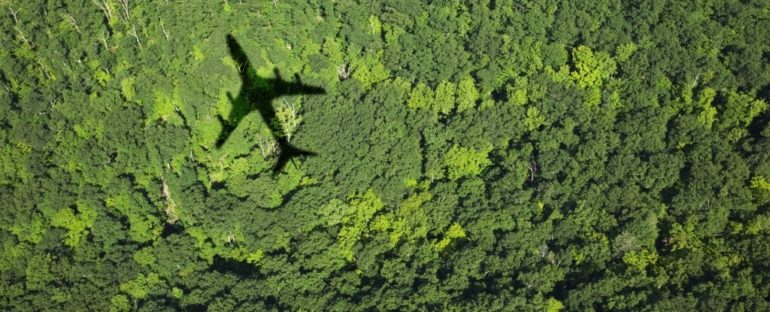The aviation industry is necessary for the world we live in today, but it places a strain on the environment, thanks to emissions from petroleum-based fossil fuel.
According to a new study, we could reduce these emissions by up to 68 percent – by switching to a sustainable aviation fuel (SAF) derived from plants. Specifically, the non-edible oilseed crop Brassica carinata, a variety of mustard plant. And it could be more cost-effective than petroleum fuel.
“If we can secure feedstock supply and provide suitable economic incentives along the supply chain, we could potentially produce carinata-based SAF in the southern United States,” says sustainability scientist Puneet Dwivedi of the University of Georgia.
“Carinata-based SAF could help reduce the carbon footprint of the aviation sector while creating economic opportunities and improving the flow of ecosystem services across the southern region.”
Roughly 2.4 percent of all global carbon dioxide emissions in 2018 were generated by the aviation industry, according to a report by the Environmental and Energy Study Institute. A study published earlier this year found that these emissions constitute a contribution of 3.5 percent to anthropogenic climate change.
That may not seem like much, but it’s growing, and worryingly fast. But carinata-based SAF is looking more and more viable.
Challenges around transitioning to biofuels include their potential to displace important food crops and questions around whether it’s even possible to grow enough fuel crops at all. Where, how, and what crop is grown also has a massive impact on whether it actually ends up reducing emissions.
That said, fuel derived from B. carinata is not a brand new idea. It was developed and tested some years ago – the first jet flight on pure carinata-derived biofuel was successfully flown in 2012, but the cost was much higher than conventional jet fuel.
The new work by Dwivedi and his team was not to prove that the fuel is viable, but to estimate exactly how cost-effective and emissions-reducing it could be.
Conventional jet fuel currently costs around US$0.50 per liter. Without subsidies, carinata-based SAF comes in at around $0.85 to $1.28 per liter, the team calculated.
But governments are offering incentives for reducing emissions that were not in place in 2012, such as the Biden Administration’s Sustainable Aviation Grand Fuel Challenge, which offers tax credits for a minimum emission reduction of 50 percent compared to conventional jet fuel.
When all available US credits were taken into account, carinata-based SAF costs between $0.12 and $0.66 per liter, the researchers found.
“Current policy mechanisms should be continued to support manufacturing and distribution of SAF. The Grand Challenge announced by President Biden could be a game-changer in supporting carinata-based SAF production in the southern region,” Dwivedi said.
In the southeastern states, where temperatures tend to be warmer, carinata can be grown in the winter months, which is the off-season for food production. This means it doesn’t directly compete with other crops. In addition, the by-products of fuel production can still be used to produce animal fodder.
It seems like a no-brainer, except for at least one problem: The US currently lacks the infrastructure for turning the crop into fuel. The feasibility of building these facilities is the focus of the team’s current research, with the hope of informing decisions to be made by farmers, investors and policy-makers.
“Our results would be especially relevant to the state of Georgia, which is the sixth-largest consumer of conventional aviation fuel in the country, hosts the busiest airport in the world, and is home to Delta, a leading global airline company,” Dwivedi said.
“I am looking forward to pursuing more research for providing a sustainable alternative to our current model of air travel. Carinata has the potential to be a win-win situation for our rural areas, the aviation industry, and, most importantly, climate change.”
The research has been published in GCB Bioenergy.



